As he approaches his 38th birthday in less than two weeks, Novak Djokovic finds himself dealing with injury concerns and has faced first-round eliminations in four of his last five tournaments. However, it would be unwise to discount his chances of a comeback at Roland-Garros.
This is the same athlete who heroically clinched a grand slam title while suffering from a torn abdominal muscle.
It has been nearly nine months since his last victory – a momentous Olympic gold medal in Paris – marking one of the longest title droughts of his career. He remains on 99 singles titles, with only Jimmy Connors (109) and Roger Federer (103) ahead of him in the all-time rankings.
Despite still being a significant presence on the court, there is little doubt that he is not the same formidable force he once was.
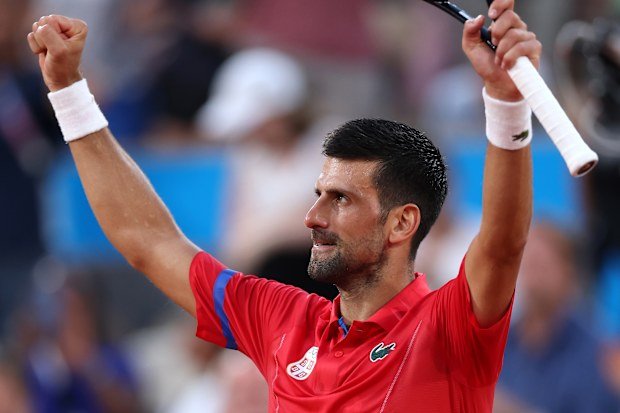
Novak Djokovic last clinched a title during the Paris Olympics. Getty
The start of his 2025 season has been somewhat bleak.
Since withdrawing during the semi-finals of the Australian Open in January, Djokovic faced early exits in both Qatar (to Matteo Berrettini) and Indian Wells (Botic van de Zandschulp).
He managed to reach the final in Miami, only to be defeated by young Czech talent Jakub Menšík. It seemed as though he was regaining his footing for the season.
But then, disaster struck again. In Monte Carlo, he fell in the first round to Chilean world No.42 Alejandro Tabilo, followed by yet another disappointing first-round loss in Madrid, this time at the hands of Matteo Arnaldi, ranked 37th in the world.
Three of those opening-round losses came in straight sets.
“This is a new reality for me, I must admit. I’m just trying to win a match or two now, not thinking about going deep into the tournament,” Djokovic remarked after his match in Madrid.
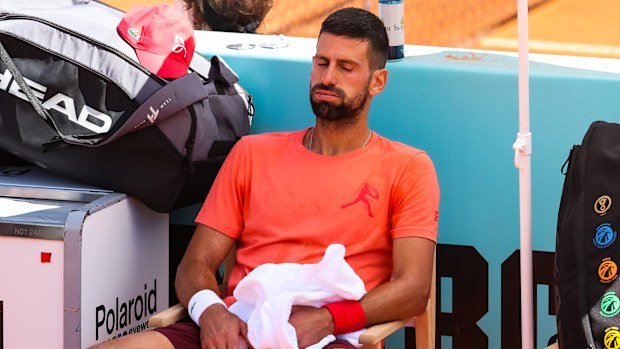
Djokovic was eliminated in straight sets at the Madrid Open. Europa Press via Getty Images
“It’s a stark contrast to the feelings I had throughout my 20-plus years in the game,” he added.
For most players, reaching a grand slam semi-final and the finals of a 1000 event would be a remarkable achievement in a year. However, as Australian tennis great Wally Masur noted, Djokovic’s standards are much higher.
Following his Madrid defeat, one respected coach voiced concerns regarding Djokovic’s motivation, suggesting he “shouldn’t even be competing”.
Masur didn’t go to that extent, but did highlight several “red flags” from those losses.
Monte Carlo is played near sea level, while Madrid has a high altitude, yet the results were surprisingly similar – both ending in 6-4, 6-3 defeats.
“That’s quite unusual. I can’t say if it was due to an injury, but something clearly wasn’t right in those matches, which fell short of Novak’s usual standards,” Masur told Wide World of Sports.
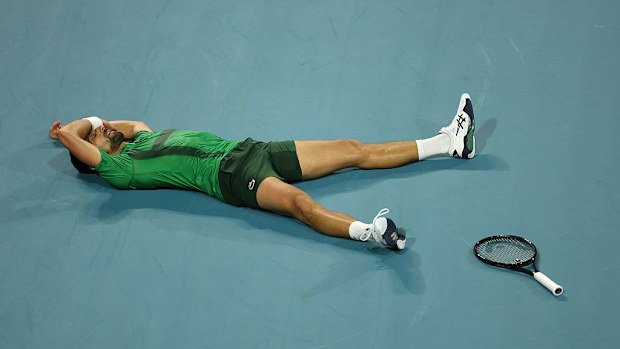
Djokovic had a chance to claim his 100th ATP title in Miami but fell short in the final. Getty
The Passage of Time
Masur explained that it’s neither shocking nor surprising to acknowledge that a 37-year-old is entering the later stages of their sporting career.
“As one approaches the twilight of their career, there will be days when the serve lacks its usual speed, or the reactions are a tad sluggish,” he remarked.
“You can perform poorly at 23, but it doesn’t have the same physical ramifications.”
Nevertheless, Djokovic is far from a typical 37-year-old. Among elite athletes, his talent for recovering from setbacks and playing through pain is remarkable.
He sat out the latter part of the 2017 season due to an elbow injury. Following his recovery from elbow surgery after the 2018 Australian Open, he astonishingly returned to play at Indian Wells just a week after getting back on the practice court, though he was eliminated in the second round.
In 2021, he defied the odds to win the Australian Open while nursing a torn abdominal muscle.
However, as he nears 40, bouncing back becomes increasingly difficult. It’s not just the physical demands of competing at the highest level that become harder; the mental aspect is equally challenging, which can only be strengthened through match practice.
“At the end of the day, confidence comes from having played a lot of matches,” Masur observed.
“You develop an instinctive understanding of the game where matters such as 4-all, 30-all take place with clarity, often played on autopilot.
“Top players typically exist in this state of mind.
“From my own experience, lacking the necessary match play can lead to reduced confidence and moments of self-doubt. This is a crucial factor for any athlete to recognise.
“The elite athletes accumulate significant match play, bolstering their confidence and allowing them to perform instinctively during crucial points.”
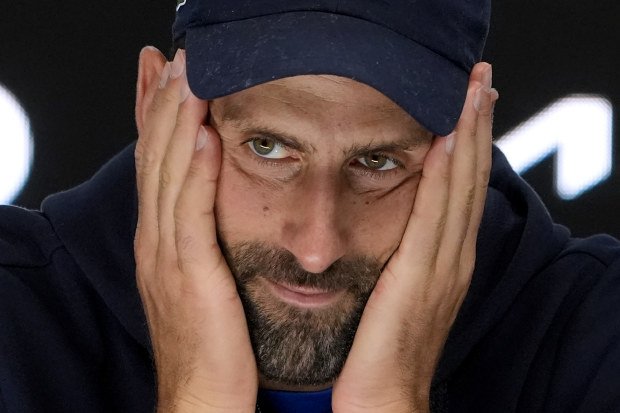
Djokovic speaks at a press conference after retiring in his semi-final match against Alexander Zverev at the Australian Open in Melbourne, Australia, on January 24, 2025. AP
A New Breed of Competitors
Adding to the complexities of Djokovic’s recent struggles is the emergence of a new generation of players who haven’t faced the peak version of him. This certainly contributes to changing dynamics on the court.
This could help explain his defeat to Menšík in Miami.
“He’s a young player who isn’t burdened by past encounters with a dominant Djokovic,” Masur noted.
“This brings us to another point: Several players have historically struggled against the top four, often succumbing before they even step on the court.”
“During my career, I often felt trepidation when facing legends like Becker or Lendl, thinking, ‘I must face them on their off days, not the good ones.’ But for players like van de Zandschulp and Menšík, they bring a fresh approach, devoid of intimidation, along with their talent and strength.”
“Djokovic may be losing a bit of his mystique, that aura of invincibility. With recent losses, the locker room is likely buzzing with the notion that he is indeed beatable, making him a noteworthy target.”
On a more fundamental level, the passage of time is catching up with him, and he no longer operates as he once did.
“I can’t comment on Djokovic’s mindset as he’s exceptionally professional, but his losses likely stem from a multitude of factors that just aren’t in sync right now.
“We’ve seen this scenario unfold with other greats like Andy Murray, Roger Federer, and Rafa Nadal. It’s an inevitable phase, and to suggest otherwise would be naive.
At nearly 38, there are days where simply getting out of bed feels aged.”
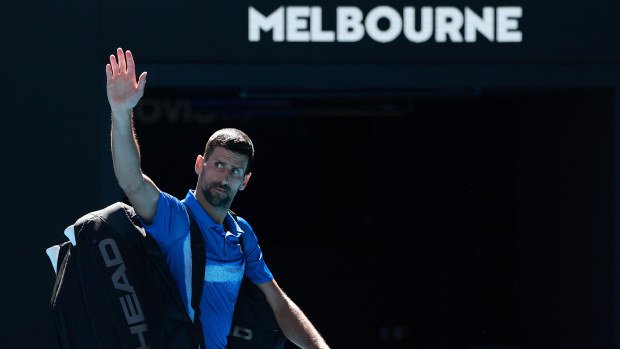
Djokovic acknowledges the crowd as he exits the court after retiring from his semi-final match. Getty
Never Underestimate a Wounded Champion
But at the core, this is still Novak Djokovic – a champion with an impressive record of 99 ATP titles, including 24 grand slam wins.
If there’s anyone capable of turning around a challenging phase, it’s him.
Particularly at the venue where he last seized a grand slam title – the clay courts of Roland-Garros.
“I’ve been guilty in the past of underestimating these legendary athletes,” Masur confessed.
“I recall once doubting Agassi’s chances only for him to clinch another slam. Federer did the same to me.”
“So, I hesitate to declare that Djokovic can’t show up at the French Open and make a significant impact.”
“What he’s accomplished in his career is nearly surreal; he operates on an entirely different level.”
“I wouldn’t overlook his presence at Roland-Garros, as he is always a formidable challenge in best-of-five set matches. It’s inherently tougher to conquer Djokovic, given that beating him over five sets is a formidable test.
“His solid record at Wimbledon is notable, but clay grants him additional time to recalibrate within matches.
“If he’s struggling on grass, it’s a distressing experience. Whereas on clay, there’s the opportunity to get more shots in and find your rhythm.
“I’m reluctant to assert that Djokovic is declining. I wouldn’t count him out just yet.”
Compiled by SportArena.com.au.
Fanpage: SportArena.com.au.
LiveScore – Live Sports Results & Odds.




